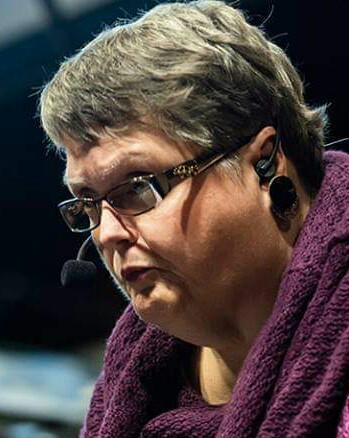***Trigger Warning: This article will speak about self-harm and may not be suitable for all audiences.***
Self-harm is one of the most challenging subjects to talk about, but millions of people will continue to suffer in silence if we do not.
This series on self-harm has been one of the most difficult I have ever written, and I know it has been challenging to read. This piece is dedicated to examining why people self-harm and the proposed remedies to end the pain.
Why Do People Self-Harm?
 Trying to understand why someone would harm themselves with cutting or some other form is difficult at best. Most of us would think that harming your body and the pain that ensues would be a deterrent, but not so for those who hurt themselves. For them, the pain they experience resulting from harming themselves brings temporary relief from the extreme emotional turmoil they feel.
Trying to understand why someone would harm themselves with cutting or some other form is difficult at best. Most of us would think that harming your body and the pain that ensues would be a deterrent, but not so for those who hurt themselves. For them, the pain they experience resulting from harming themselves brings temporary relief from the extreme emotional turmoil they feel.
One must add drinking to access and using illicit drugs to the list of ways people self-harm. Alcohol and drugs also give brief respites from stress and emotional pain, but abusing either can cost the person’s life.
There are six reasons people self-harm:
- To release tension caused by strong emotions or overwhelming thoughts
- To distract themselves by altering the focus of their attention
- To express themselves or communicate strong emotions to others
- To punish themselves
- To experience a temporary but intense sense of euphoria
- To feel something when they are numbed out or dissociated
Although the person who self-harms does not intend to end their life, death can result from cutting or otherwise injuring oneself.
Personalized Safety Planning
Treating self-harm by using the skills of mental health professionals is possible and basically includes treating the underlying emotional pain and possible mental health disorder by making safety plans.
According to the National Institute of Mental Health, personalized safety planning
“has been shown to help reduce suicidal thoughts and actions. Patients work with a caregiver to develop a plan that describes ways to limit access to lethal means such as firearms, pills, or poisons. The plan also lists coping strategies and people and resources that can help in a crisis.”
Breaking the quote down, personalized safety planning involves people who self-harm working closely with a mental health professional (or medical doctor) to develop a plan of action to limit the person from means that could be lethal.
Also, a personalized safety plan includes a list of coping strategies to cope, including:
- Reaching out and connecting to others, especially those who have shared experiences
- Talking about what is going on, including all the emotional turmoil one may be feeling
- Allowing oneself to weep
- Doing exercises such as aerobics, bicycling, jogging, or walking
- Doing relaxation techniques such as yoga, massage, or stretching
- Taking a hot bath or shower
- Expressing one’s feelings through art or music
- Listen to relaxing music
- Commit oneself to do something personally rewarding every day
- Write down how you are feeling with detail just for yourself or to share with a therapist or others
Keeping a list of those who can be contacted in case of emergency is necessary to any action plan for those who have a history of self-harming.
Treatments for Self-Harming
 Many types of psychosocial interventions have helped millions of those who have a history of self-harming. They include cognitive-behavioral therapy (CBT) and dialectical behavior therapy (DBT).
Many types of psychosocial interventions have helped millions of those who have a history of self-harming. They include cognitive-behavioral therapy (CBT) and dialectical behavior therapy (DBT).
Cognitive-behavioral therapy is an intervention to improve mental health by focusing on challenging and changing thinking distortions and behaviors. CBT can also help a person improve emotional regulation and develop personal strategies that target solving personal problems.
CBT helps people learn new ways of dealing with stress and trauma by training victims to recognize their thought patterns and consider doing something else (using a coping skill, for instance) to prevent themselves from self-harming.
Dialectical behavior therapy is an evidence-based psychotherapy that can be useful in treating suicidal ideation, self-harm, and mood disorders.
DBT reduces the rate of suicide among adolescents and adults and lowers the risk of self-harm by helping the person recognize when they feel like self-harming and instead, replacing the behavior with better skills to deal with what is upsetting
Medication is also an option to treat underlying mental health disorders such as major depression or generalized anxiety disorder. Working together, those who have a history of self-harming find the best medication to treat their symptoms and bring relief that does not include self-harm.
If you are prescribed medication, you must do the following:
- Do not stop taking medications without first talking to your doctor. Suddenly stopping medication can cause worsening of symptoms and withdrawal symptoms.
- Report any side-effects to your doctor right away, as you may need to adjust the dose or change the medication to another
Treatments to prevent self-harm are widely available at local mental health centers or private therapists.
If needed, never hesitate to call an ambulance or go to your local hospital’s emergency department if you feel like self-harming or are having suicidal thoughts. Your life is valuable.
Things to Do for Someone You Love Who Self-Harms
 The first thing to do is to be realistic about what you can and cannot do. You CANNOT control other people’s actions, nor are you responsible for the actions someone else does to self-harm.
The first thing to do is to be realistic about what you can and cannot do. You CANNOT control other people’s actions, nor are you responsible for the actions someone else does to self-harm.
Your loved one may not be ready to admit they have a problem, so be careful about the amount of pressure you put on yourself. Your loved one’s problem is probably longstanding, and it will take a mental health professional to do the deep work needed to end their self-harming behaviors.
There are some ways you can help your loved one who self-harms:
Talk about what you see. Let your loved ones know that you are not judging them but that you want to help if you can. Be aware they may not want to talk about their self-harming behaviors, but let them know the offer to help stands.
Tell someone. If your loved one asks you not to tell anyone about their behaviors, say that you are not sure that you can because you care about them. If you are an adolescent, tell someone in a position to help, such as your parents, your school, or your counselor. Studies show that 90% of those who self-injure can stop within a year of beginning treatment because someone spoke up.
If you are an adult, you can tell your doctor or other professional about what you have observed, and they can take it from there. Do not be afraid to call for an ambulance or the police if necessary.
Help your loved one find some resources that can help. Help them find a therapist and point them toward hospitalization, making it clear that you are doing so because you care.
Always acknowledge your friend’s pain. Allow your loved ones to know you hear them and see their pain and suffering.
Take good care of yourself. You are no good to your loved ones if you suffer from the stress involved in helping them heal. Make sure to disconnect when you need to and to do everything you can to do self-care. Go for walks, enjoy the sunshine, allow yourself to cry, and if necessary, seek out a psychotherapist for yourself to help you cope.
Things to Do for Someone You Love is Suicidal
 The acts of self-injury are hard for people to think thoughtfully about what the act means. Panic is the first emotion most people feel when they discover someone they love, which is suicidal.
The acts of self-injury are hard for people to think thoughtfully about what the act means. Panic is the first emotion most people feel when they discover someone they love, which is suicidal.
Below are some helpful tips to aid you if you have a friend or relative who is suicidal and needs your help.
Ask the question, “Are you thinking about killing yourself?” Yes, it’s not an easy question to ask, but studies have shown that asking people at risk for suicide if they feel like harming themselves DOES NOT increase suicidal actions or thoughts.
Keep them safe by reducing the person’s access to lethal means. While this tip is not very difficult, asking if an at-risk person has a plan and acting accordingly can make a huge difference.
Help them connect to appropriate professional care, such as calling the National Suicide Lifeline (1-800-273-TALK or text 741741) or call your local hospital for help. If the person is actively suicidal and you fear for their life, do not hesitate to call an ambulance or the police. While the person you love may be angry at your actions, later, when they are feeling better, they will thank you.
Be there for them after they have gotten help through the hospitalization process and feel better after discharge. They need an ear to listen to their emotional cries and feelings. (Remember, you are not a therapist, and it is not your job to offer therapy.)
Winding It Down
It is my sincere hope that talking about self-harm has helped you to understand yourself and others better who hurt themselves or are suicidal. Ultimately, people are responsible for their own actions, and we have no control over what they will and will not do to themselves.
It is critical to remember to always take care of yourself first if you are a relative or friend of someone who self-harms.
If you are a person who harms yourself, don’t feel ashamed but get help. Your life is so valuable, and we need your voice to guide humanity through our travels through time.
“It dawns on you one day… how precious your life is and how not okay it is for anyone, ever, to cause you any amount of suffering, ever. Then the next time you step out the door you look at everyone and you’re thinking, “My life is precious and you’re not allowed to hurt me.”
―

Reference
Suicide Prevention. National Institute of Mental Health. Retrieved from: https://www.nimh.nih.gov/health/topics/suicide-prevention/index.shtml#part_153179

If you are a survivor or someone who loves a survivor and cannot find a therapist who treats complex post-traumatic stress disorder, please contact the CPTSD Foundation. We have a staff of volunteers who have been compiling a list of providers who treat CPTSD. They would be happy to give you more ideas about where to look and find a therapist to help you. Go to the contact us page and send us a note stating you need help, and our staff will respond quickly to your request.
Are you a therapist who treats CPTSD? Please, consider dropping us a line to add you to our growing list of providers. You would get aid in finding clients, and you would be helping someone find the peace they deserve. Go to the contact us page and send us a note, and our staff will respond quickly.
Shortly, CPTSD Foundation will have compiled a long list of providers who treat complex post-traumatic stress disorder. When it becomes available, we will be putting it on our website www.CPTSDFoundation.org.
Make sure to visit us and sign up for our weekly newsletter to help keep you informed on treatment options and much more for complex post-traumatic stress disorder.

If you or a loved one live in the despair and isolation that comes with complex post-traumatic stress disorder, please, come to us for help. CPTSD Foundation offers a wide range of services, including:
- Daily Calls
- The Healing Book Club
- Support Groups
- Our Blog
- The Trauma-Informed Newsletter
- Daily Encouragement Texts
The Healing Book Club
Today, CPTSD Foundation would like to invite you to our healing book club, reading a new book that began in September. The title of the latest featured book is The Body Keeps the Score by Bessel van der Kolk.
Led by Sabra Cain, the healing book club is only $10 per month. The fee goes towards scholarships for those who cannot afford access to materials offered by CPTSD Foundation.
Should you decide to join the Healing Book Club, please purchase your books through our Amazon link to help us help you.
All our services are reasonably priced, and some are even free. So, to gain more insight into how complex post-traumatic stress disorder is altering your life and how you can overcome it, sign-up; we will be glad to help you. If you cannot afford to pay, go to www.cptsdfoundation.org/scholarship to apply for aid. We only wish to serve you.

My name is Shirley Davis and I am a freelance writer with over 40-years- experience writing short stories and poetry. Living as I do among the corn and bean fields of Illinois (USA), working from home using the Internet has become the best way to communicate with the world. My interests are wide and varied. I love any kind of science and read several research papers per week to satisfy my curiosity. I have earned an Associate Degree in Psychology and enjoy writing books on the subjects that most interest me.



